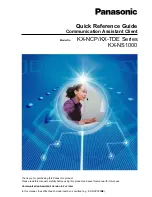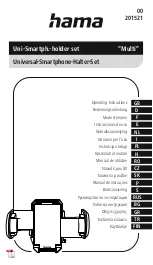
14
SUGGESTIONS
1. Always clean all food, fat and foreign materials from the blade surfaces before sharp-
ening or resharpening. If badly soiled, use detergent and water to clean.
2. Some contemporary Asian knives and Granton type blades are dimpled and some
contemporary and traditional Asian blades are made of layered Damascus steel. All of
these should be sharpened accordingly to these instructions depending solely on whether
the knife style is contemporary (two facets) or a traditional single facet Asian blade.
3. Always pull the blades at the recommended speed and at a constant rate over length of
blade. Never interrupt or stop the motion of the blade when in contact with abrasive disks.
4. Carefully follow the detailed procedures for each type blade for best results and to
extend the useful life of your knives. The sharpening sequence is especially important
with the single sided traditional Asian blades.
5. The edge of the knife blade, while sharpening, should remain in contact with the
abrasive disks as the knife is withdrawn from the guiding slot. To sharpen the blade
near the tip of a curved blade, lift the handle up slightly as you approach the tip of the
blade but just enough so that the edge as it is being sharpened maintains audible
contact with the honing or stropping disk.
6. To increase your proficiency with the Chef’sChoice
®
Model 15, learn how to detect a
burr along the edge (as described on page 6). While you might be able to sharpen well
Figure 14. If your blade has a significant choil it may
be helpful to place our finger behind it as shown
when sharpening.
Figure 15. Insert your index finger as shown behind the
choil as the knife is inserted into the sharpening slot
(see Suggestion 8.)
Choil
Figure 16. Removing cover under base to clean out
metal dust. (See Normal Maintenance section)

































